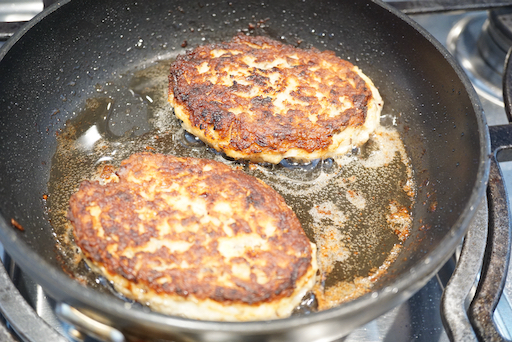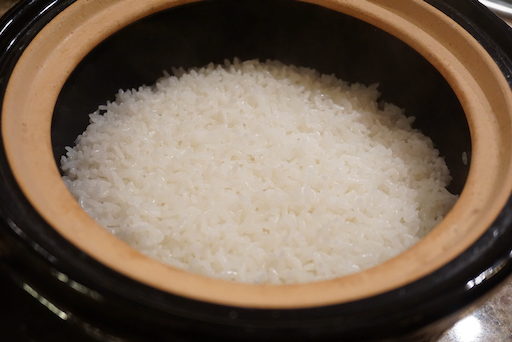I was trying to use all parts of the whole yellowtail I got from Hmart through Instacart. I scraped off all the meat from the bone as well as the meat close to the end of the tail. I minced it but the amount was not enough to make a substantial dish. So I decided to make a yellowtail burger. As a binder and to make the "meat" go further I added “hanpen ” はんぺん. It is steamed Japanese fish cake made of white fish meat and egg white and came pre-made in a package. I served the resulting burger as a lunch with leftover shiitake mushroom risotto, sautéed pencil asparagus and scrambled egg with tomato.

Ingredients:
Yellowfin meat scraped off from the bone and the end of the tail, finely minced (I am not sure how much this was but probably less than 200 grams)
1/3 hanpen, thawed, cut into small cubes
1/2 egg, beaten
2 shiitake mushroom, both stalks and caps finely chopped
1 tsp of red miso
1/2 tsp mirin
Pinch of salt
Vegetable oil for cooking
Directions:
In a plastic cylinder (which came with the emersion blender), add the hanpen and the egg. Using the emersion blender make a smooth mixture. Add the miso and the seasoning and blend. Add the yellowtail meat and mix with a silicon spatula. Dump the mixture on a lightly oiled plate, divide in half and form two oval disks, half inch thick. In a non-stick fry pan, on medium-low heat add the oil and slide in the disks. I cooked one side about 5 minutes and turned the burger over and cooked another 3-4 minutes until done.
This was rather gentle tasting and tender fish burger. The miso flavor really made it. This was nice light lunch.





















